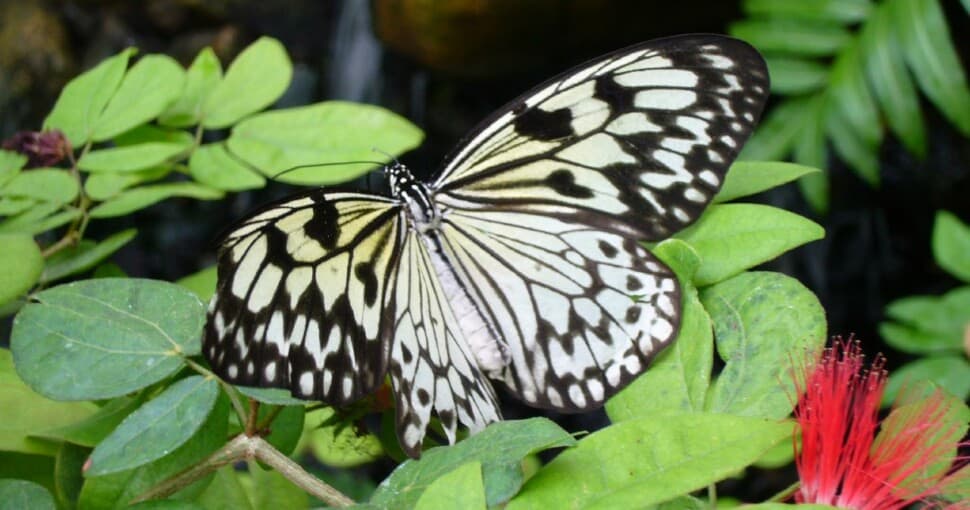Several plant species resemble butterflies with their triangular, rounded, pointed veined leaves or their multi-colored flower petals that look like hovering or partially closed butterfly wings.
Contents
And most plant species that look like butterflies have the added advantage of attracting pollinators like bees, butterflies, and birds. Thus they are a great addition to any garden.
So, here is a brief rundown of plants that look like butterflies, including their most prominent features:
- Red butterfly wing plant – has leaves that flutter like butterflies in the wind.
- Blue butterfly bush – a tropical shrub that can grow up to 10 feet high with blue butterfly-shaped flowers.
- Whirling butterfly – features small pink or white butterfly-shaped flowers.
- Butterfly orchid – grows in trees and can produce up to 45 butterflies shaped fragrant flowers.
- Anthurium and Arum – have textured foliage that features leaf veins in complimentary colors like butterflies.
- Cyclamen species – features delicate blooms at the end of the stalks that look like hovering butterfly wings.
- Rex begonia – have colorful, oval-shaped leaves with pointed edges.
1. Red Butterfly Wing Plant (Christia Vespertilionis)
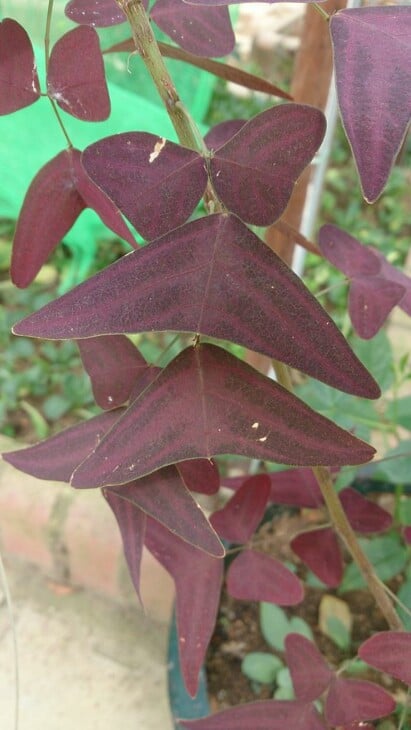
The red butterfly wing plant or mariposa leaves closely resemble Troides brookiana, or “birdwing butterflies,” in mid-flight due to their paired elongated, horizontal foliage and rounded points. The plant’s leaves also resemble flying butterflies when they are moved by the wind.
While the origin of red butterfly plants is unknown, they are most likely from Asia. And are suited to USDA plant hardiness zones 10-11.
Red butterfly wing plants should ideally be planted in areas sheltered from harsh sunlight, in moist, well-draining soil, with an average humidity factor of 40%.
2. Blue Butterfly Bush (Clerodendrum Ugandense)
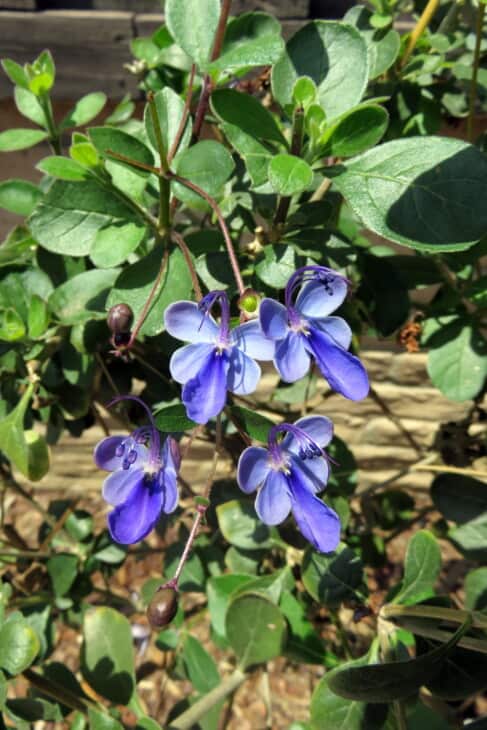
Native to East Africa, the blue butterfly bush, or blue glory bower tropical shrub, produces blooms that closely resemble blue-hued butterflies at the end of each stem.
The blue butterfly bush produces butterfly-shaped flowers from summer to fall with three light blue lobes and one blue-violet lobe. And their oval-shaped foliage is roughly 3-5 inches long and contains a light scent that repels bugs.
This stunning plant has the potential to grow up to 10 feet high if it is grown in optimal conditions, so the arching branches must be pruned regularly.
Blue butterfly bushes should ideally be planted in a sunny area to promote their abundance of flowers in loamy, humid soil. However, they do tolerate partially shaded areas.
They should be watered at least twice a week, although they are prone to root rot. So, their soil must be relatively dry before they are watered and ideally fertilized twice per month while they are growing.
3. Whirling Butterfly Plant (Gaura Lindheimeri)
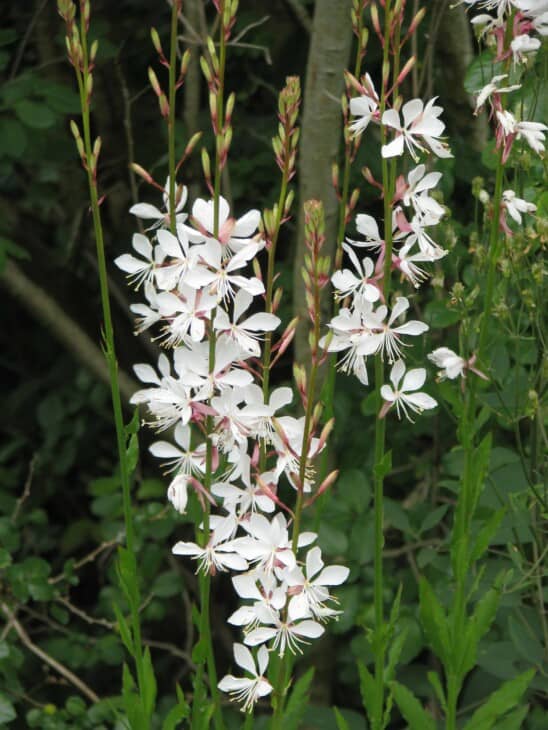
Native to Mexico, the magnificent whirling butterfly plant (Gaura lindheimeri), also known as Indian feather or butterfly gaura, is a perennial that grows between 20 and 60 inches tall.
The whirling butterfly plant produces small pink or white butterfly-shaped flowers from rose-hued flower buds attached to elegant long stems.
These delicate butterfly-shaped flowers bloom in small clusters from spring to autumn. They are a great addition to any garden as they attract butterflies and bees.
They can be grown as ornamental plants in containers and flowerbeds in full sun. And while some Gaura plant species are invasive, that is not the case with the whirling butterfly plant.
To keep them in prime condition, they must be planted in well-draining, fertile soil with the addition of rich organic nutritive compost. Although, these hardy plants can survive on very little water and are easy to care for.
4. Butterfly Orchid (Encyclia Tampensis)
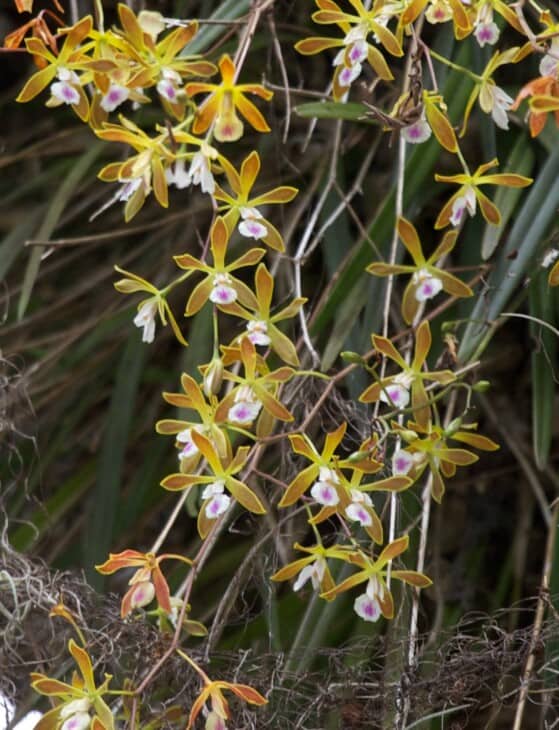
The aptly named butterfly orchid, with its flower petals fluttering in the wind, is an evergreen epiphytic plant that depends on other plants to grow and is part of the orchid plant family.
Native to Cuba, Florida, including the Bahamas, where they predominantly grow in trees, swamps, forests, and waterways.
Butterfly orchids have tiny, dark green-hued pod-shaped forms with up to two 12-inch-long grass-blade-shaped leaves.
These generous orchids can produce nearly 45 fragrant orchid flowers in shades of green, yellow, bronze, or copper, lined in purple and white hues that emerge from their leaf-blade axils.
They are best grown in garden trees or attached to a cork, or wooden plank, as they typically grow in red maples, pop ash, palm, and pine trees. However, they prefer southern live oak trees in their natural habitats.
Butterfly orchids are not suited to USDA plant hardiness zones under 7. They need to be planted in humid and partly shaded areas. And when they are in a growth phase, they need to be watered at least 2-3 times per week and fertilized with a diluted liquid solution regularly (every 2 or 4 weeks).
Although butterfly orchids are a threatened plant species, so even though there are several of these plants in Florida, they may not be sold commercially.
5. Laceleaf (Anthurium)
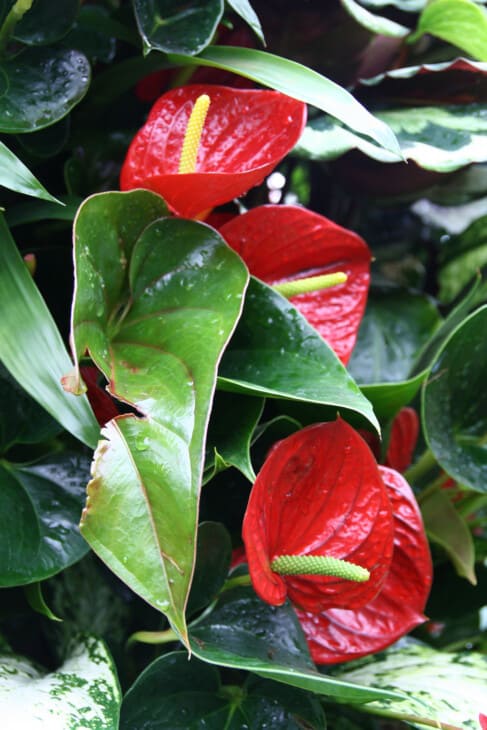
Native to Mexico, Argentina, and the Caribbean, the Anthurium plant family consists of roughly 1000 flowering species. The Arum Araceae plant family is the most prevalent, commonly referred to as Laceleaf, flamingo, or tail flowers.
Anthuriums looks like peace lilies.
Like butterfly wings with distinct veins, some arum and Anthurium plant species have textured foliage that features leaf veins in complementary colors. Anthurium plants can be cultivated outdoors in moderate climates, and shaded areas especially Anthurium clarinervium, and Anthurium crystallinum varieties.
While colorful hybrids like Anthurium scherzerianum and Anthurium andraeanum varieties require moist, organically enriched soil. Although they are also excellent houseplants when grown at temperatures ranging from 61 to 72 °F. Unlike other plants, they are also adept to low-light conditions.
Anthurium houseplants benefit from diluted fertilizer applications every two weeks, especially when they have a mature root system. Their foliage must be kept clean and wiped down occasionally to remove insects and dust. Vining Anthuriums also need to be supported with a climbing totem.
6. Cyclamen
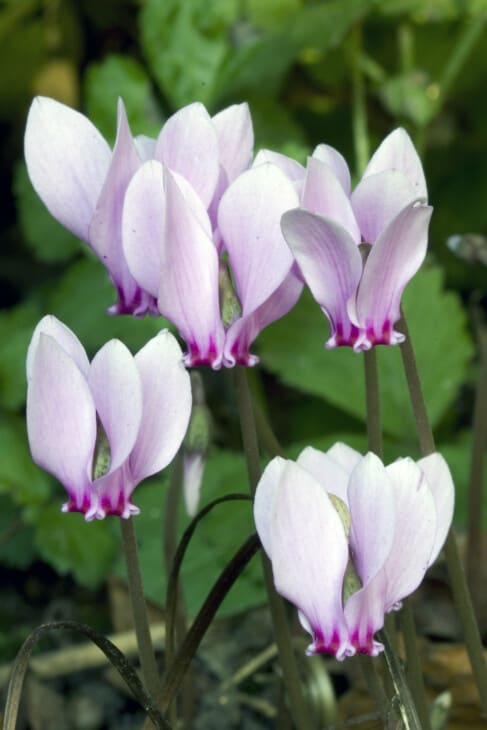
The Cyclamen butterfly plant species have oval-shaped, pointed foliage that often features blotches or spots.
These plants often have several elongated, leafless stalks that emanate from the center of the plants, with delicate blooms at the end of the stalks that look like hovering butterfly wings that are semi-closed.
Cyclamen flowers predominantly resemble Pyrisitia lisa (little yellow) and Neophasia menapia (white) butterfly species. They tend to be more suited to being grown outdoors in the USDA plant hardiness zone 5.
Although, those sold as houseplants are mostly tropical varieties that cannot handle temperatures under 40 degrees F. And they are susceptible to under, and over-watering, so they need to be grown in potting soil that drains well, yet retains moisture.
7. Rex (Begonia Spp)
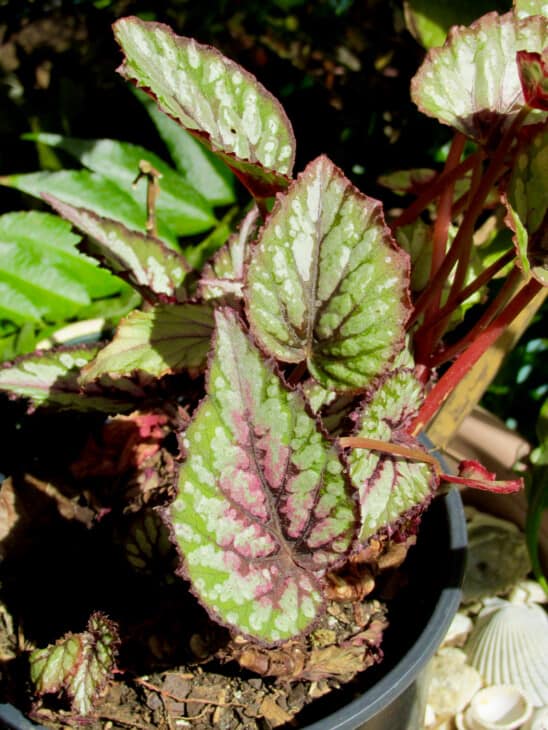
Most begonias have angular foliage with striking markings. Especially Rex begonias, which are native to India with their colorful, oval-shaped leaves and pointed edges that resemble butterfly wings.
Rex begonias are semi-tropical perennials usually grown as a house plant and cultivated outdoors in warmer climates ranging from USDA Hardiness Zones 10-12.
Ideally, they should be grown in shallow pots, with an absorbent potting mix, fertilized, and watered regularly to retain moisture with humid daytime temperatures of roughly 70 degrees F. and nighttime temperatures of approximately 60 degrees.
Rex begonias also prefer to be placed in indirect sun. They should be rotated regularly to expose them to enough light and not direct sunlight, which will damage them. However, these plants are toxic for animals, so they should be kept away from cats and dogs.
Several other begonia plant species also have leaves resembling butterfly wings, like the tuberous, angel-wing, rhizomatous, and cane-stemmed begonias.

